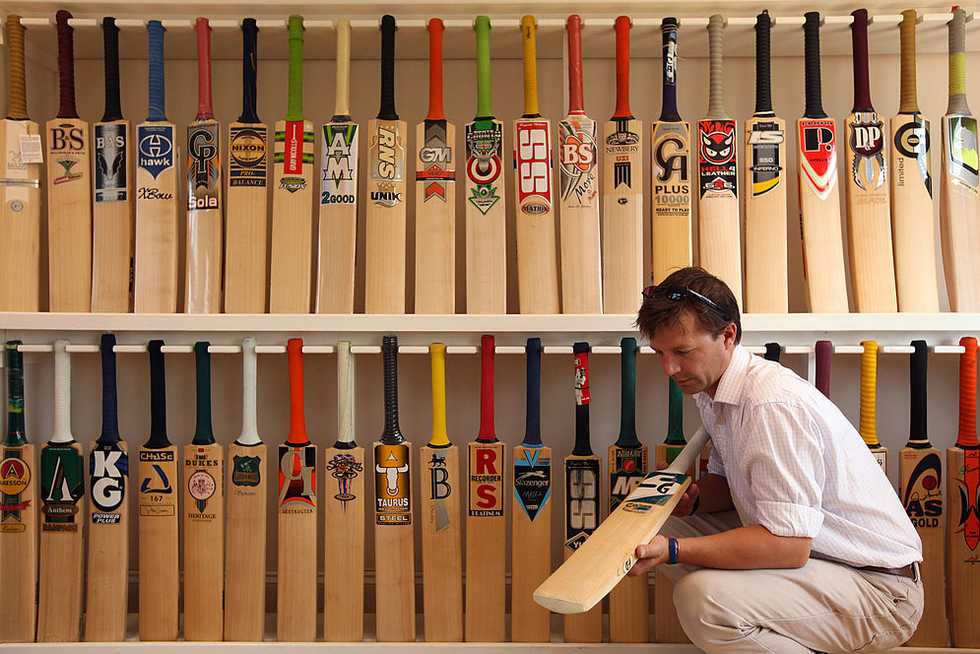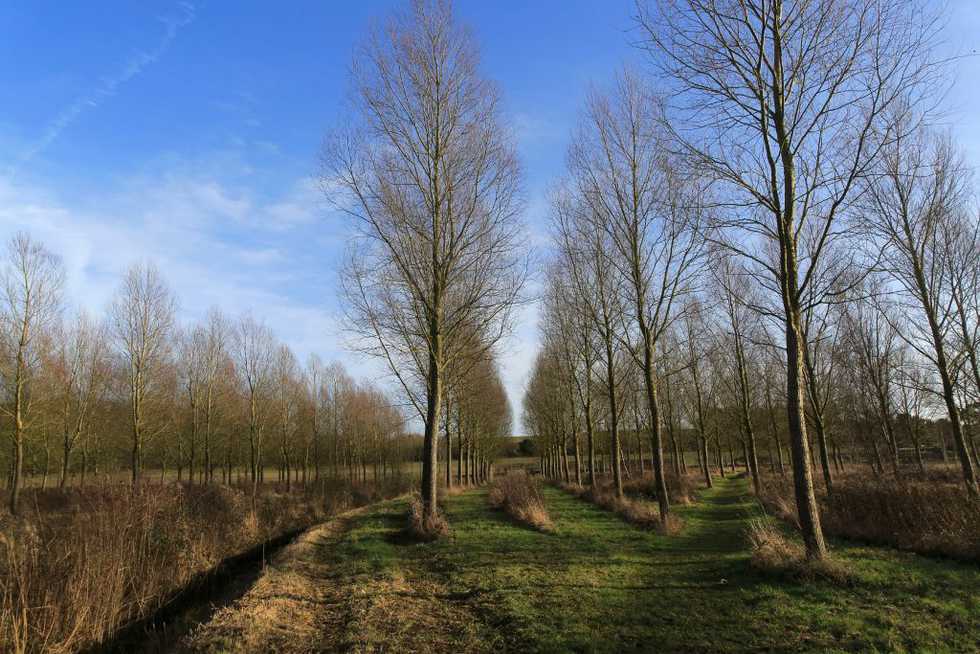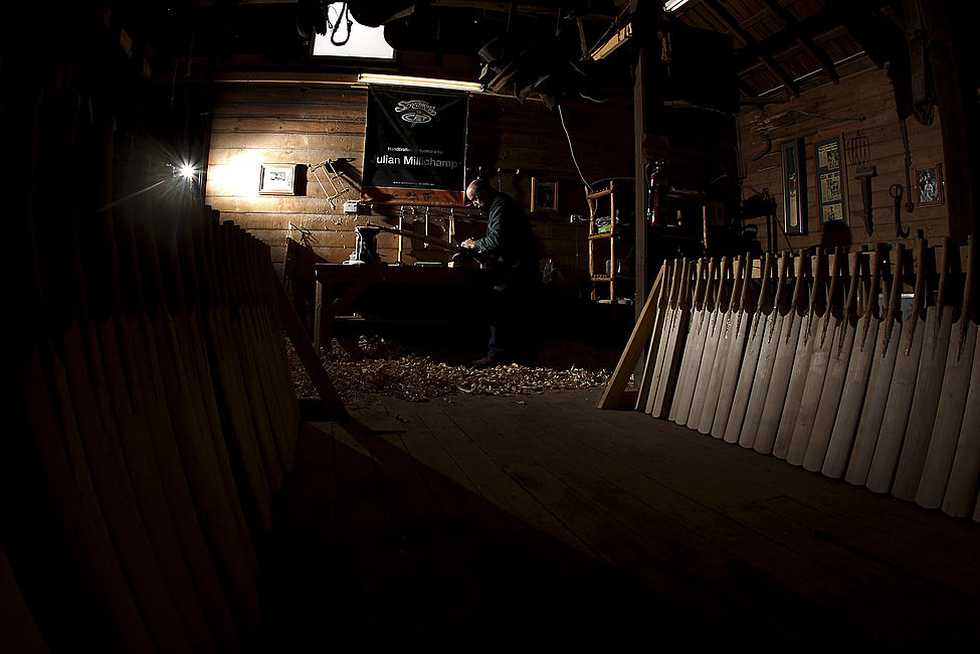

At Lord's this week, as players grumbled and commentators riffed about the now-familiar ritual of swapping out soft, out-of-shape Dukes balls, another quieter set of substitutions unfolded. Over five days there were four bat changes, not all because blades cracked or edges splintered, some simply because batters preferred a different feel and can afford to swap.
Watching from the stands was former England captain Mike Gatting, who remarked how he once used just three bats a year. Today, players like Steve Smith carry upwards of 18, each meticulously numbered, conditioned, and prepared. It's a striking contrast, from a time when cricket's rhythms felt in sync with nature. Now the appetite seems unending.
Yet each bat isn't just equipment, it comes at an ecological cost. It begins as part of a tree that takes up to two decades to mature. One tree, once felled, produces around 40 bat clefts. The T20 boom has driven demand to unprecedented levels, straining century-old willow farming traditions.
Jeremy Ruggles, Director at JS Wright & Sons, a family-run business that's cultivated Salix alba caerulea - English willow - for over a century, knows this storm up close. "Since the IPL started, this [demand for bats] has increased every year. Many more times than we anticipated 20 years ago," Ruggles says. He was at Lord's himself, observing both the cricket and its subtler undercurrents.
Where willow once grew quietly along rivers and floodplains, now it's a commodity. JS Wright felled around 11,000 trees last year but planted 44,000, maintaining a ratio of about three-to-four trees planted for every one cut down. That scale is necessary. A tree typically takes 18 years before it can become cricket bats. Trees ready today should have been planted around 2008, when T20 cricket exploded.
"The big problem is we didn't anticipate this demand boom about 15 years ago," Ruggles says. "We didn't plant 44,000 trees in 2008. If we had, we'd be laughing now." That lag directly impacts prices. Shortage of mature English willow means top-grade bats can cost up to USD 1,500.

The legal replanting standard in the UK is one-for-one. But, Ruggles warns, that's not enough. "One in three trees will die. Animals damage them, drought hits, diseases like Honey fungus can spread." And while old organisations like JS Wright invest in robust, nursery-grown saplings, 14 feet tall and already three or four years old when planted, not everyone does.
"When we cut a tree down, we put in one that's already good quality," Ruggles explains. "But a lot of people plant trees about as thick as your thumb, spindly, not straight - they aren't going to produce lots of cricket bats in the future. You're doing your one-for-one bit, but not investing in the nursery beds. That's one problem. The Forestry Commission is run by the government, and they haven't got the funds to go around and check people."
With more players entering the willow trade lured by rising prices, many focus only on short-term gain. "It's an industry, isn't it? The English cricket bat willow industry," Ruggles says. "Everyone should be looking to the future, looking for cricket, but I'm afraid a lot of people are just looking out for the short-term monetary gain they can get and not worrying about the future. We've been going 135 years. We'd like to be going another 135 years."
The industry has deeper challenges. Climate change has altered growing patterns. English winters are milder. Growing seasons stretch longer, from March to November instead of April to October. This has made trees grow faster. Where once willow took over 20 years to mature, some are now ready in 12-15 years. That directly changes the wood's character. Faster growth produces wider grains.
Bats with wider grain can perform just as well, but take longer to knock in and bring alive. Narrow-grain bats, from older, slower-grown trees, come almost match-ready, which is what the players prefer. "I've promoted wide grain for years. But it's against a brick wall really. People don't like it," Ruggles says.
The preference isn't just performance, it's perception. Players post photos of sleek new bats with tightly packed grains. Young boys and girls want the same. Yet narrow-grain bats break faster. Their dense fibres mean less durability, more turnover.

That professional turnover quietly drives prices. "Pros treat their bats as disposable," Ruggles says. "They get so many free [bats] in their contracts. I'm not sure they realise that these all need to be paid for by higher prices on finished bats to the public. Sareen [SS Sports] and SG [Sanspareils Greenlands] - well-known Indian manufacturers - had 60 players each at least in the last IPL, all getting free bats, more than one each of the best bats they make." The costs for these are balanced out by what the public pays for their bats and other cricket equipment.
To address these strains, the MCC recently convened its World Cricket Connects conference in June, inviting Ruggles and manufacturers like Kookaburra. Among other burning cricket topics, they also brought forth "the bat emergency." One solution discussed was laminated bats. Currently allowed in junior cricket, laminated bats join multiple pieces of wood rather than being carved from a single cleft. Ruggles explains laminated bats could retail as low as USD 65.
"You might have English willow on the front, Kashmir willow on the back," he says. "It helps because leftover pieces that can't make full bats are still used." Laminated bats reduce waste, ease supply pressure on the English willow planters, and make the game more accessible. They also stir debate about tradition, a topic cricket is romantic about.
At their own farms, JS Wright & Sons aim to minimise waste too. While most of each tree is used, whether as clefts, biofuel, or for other products, the smaller tops and branches, prone to disease, are still burned on site. "It isn't great ecologically," Ruggles admits, "but if you leave chipped branches lying around, the disease just spreads."
Cricket bats have become symbols of modern sport's tensions: the balance between tradition and innovation, the pressure of global demand, and the quiet environmental cost of every swing. In this dance of wood and willow, time is both a friend and a foe - trees take years to grow, but the game's appetite grows faster. And the people growing those trees can't fast-forward time.
As the T20 game keeps expanding and more kids dream of wielding their own narrow-grain blade, the call grows louder: to plant more, use smarter, and cherish what the willow offers, before the bat emergency becomes a crisis beyond repair.





